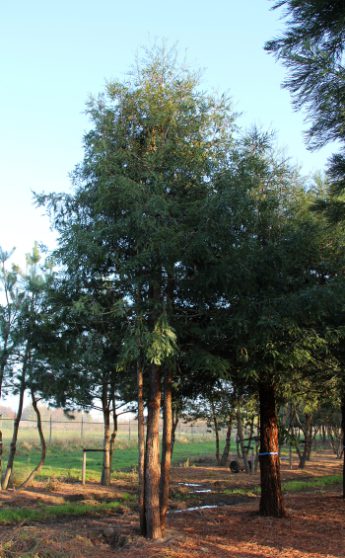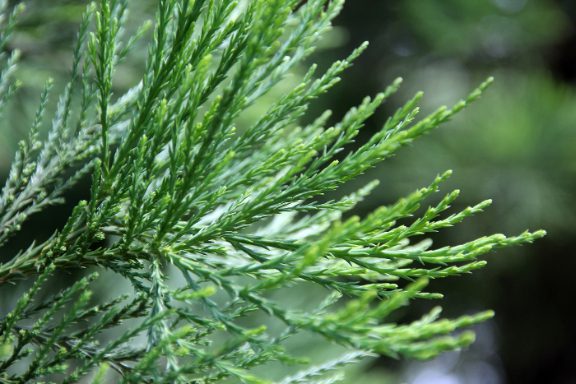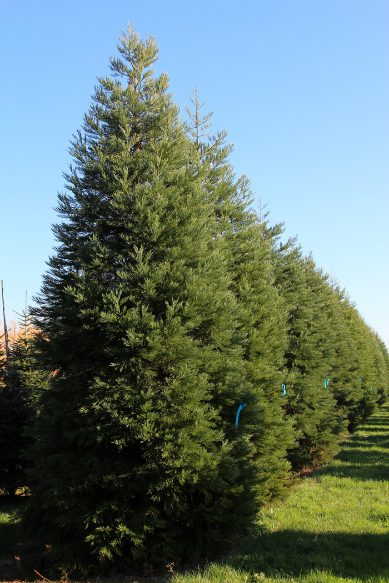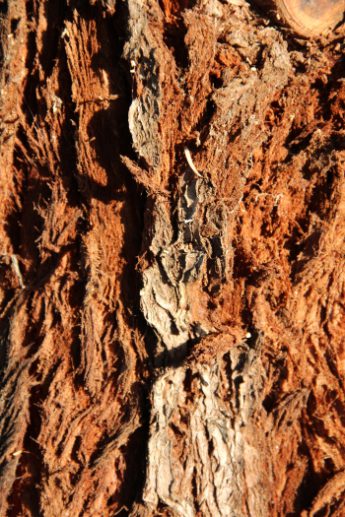Sequoiadendron giganteum | Giant Redwood | Wellingtonia
This large and long lived evergreen tree, native to California was introduced to the UK by William Lobb in 1853. These trees can live for over 3,000 years and this is the largest tree in the world by volume. Apart from its sheer size and volume, the Sequoiadendron giganteum can grow to up to 100m+ in its natural habitat. With a trunk of over 12m. It has a distinctively thick, deeply grooved, reddish-brown bark that has a flakey look and spongy feel to it. Towards the top of the tree it has a dense cone shaped crown, while the lower branches swoop downwards and have turned up ends. The short blueish-green scale-like leaves are sharp and arranged spirally on the shoots. The green seed cones, with their winged seeds, can turn reddish brown and mature in two years, but will usually stay green and remain on the tree for 20 years. The Sequoiadendron giganteum is an magnificent tree for large parklands and estates.
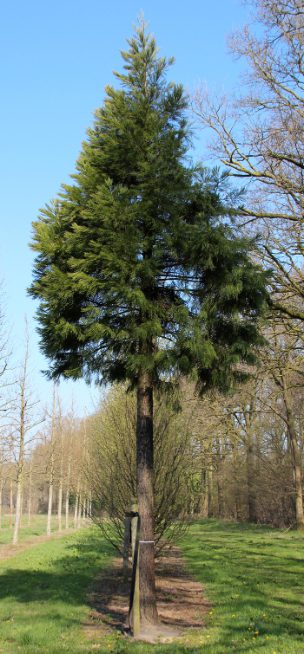
This tree was initially given the name Wellingtonia gigantea in reference to the Duke of Wellington who passed away in 1852. Although this name was botanically incorrect and later corrected to Sequoiadendron giganteum some years later following much debate and re-classification. Giant redwoods can live for over 3,000 years. One of their secrets to a long life is that they have a substance called tannin in their bark that boosts their resistance to pests and diseases. Giant redwoods have adapted to be fire-resistant as they grow in fire-prone areas. Their thick, spongy, bark helps protect mature trees from damage, as well as the water-based sap they produce. The mature trees also self-prune low branches to prevent fire from spreading through the canopy.

